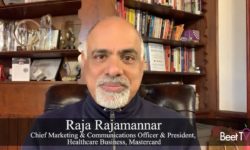The ongoing fragmentation of the media marketplace has given brands more ways to engage with target customers among a wider variety of platforms and channels. Providing those consumers with a consistent experience among those outlets is a key priority for brands as they develop a cross-platform strategy.
“We see so many marketers really taking on that challenge to think more about the total value and experience in storytelling, versus the allocation of different stories across different channels,” Amanda Richman, chief executive of North America for WPP’s Mindshare, said in this interview with Beet.TV.
She pointed to her company’s recent work for Nature Valley, the granola brand marketed by General Mills, as an example of that omnichannel approach. With many people feeling weary of being stuck indoors during the pandemic, the brand’s “Take In the Outdoors” campaign showcased the benefits of getting back in touch with nature. The effort included an audio experience of guided nature walks, immersive 360-degree videos of outdoor settings, content for social media platforms and immersive OOH experiences.
Contextual vs. Audience-Based Ads
Tracking cookies have empowered marketers to retarget their ads at consumers wherever they spend time online, making audience-based media strategies more precise. The gradual disappearance of tracking cookies and device identifiers because of privacy concerns has spurred the development of alternative ways to improve ad targeting. It also has led to more discussion about the effectiveness of contextual advertising – or placing ads within content that appeals to a target audience.
Audience-based and contextual advertising are reciprocal in engaging consumers at different stages of the purchase funnel, Richman said.
“We’ve always been approaching the world from a more full-funnel lens and think through how they complement each other,” she said. “This false divide of context versus precision is going away as we continue to think about how do we bring that together and complement the strengths, and really drive towards a better contextual understanding of unique audiences that can be identified through a number of data signals.”
Doing Good with Good Growth
Mindshare last year introduced its Good Growth concept of inspiring marketers to create brands that are enduring, diversified and more sustainable in the longer term. The idea aligns with GroupM’s goal of promoting responsible media.
“2022 is really the year of not only talking about it from a positioning perspective and product lens, but also driving that completely through the organization,” Richman said.
As part of its efforts to help brands connect with diverse audiences and to support a broader variety of media owners, Mindshare introduced private marketplaces (PMPs) that have a curated selection of ad inventory.
“Here’s the opportunity for our clients to participate in pools of inventory and approaches that can actually help them reach diverse audiences – and diversify their lens of what audiences can help grow their business,” Richman said. “The opportunity that we see coming out of our investment inclusion PMPs is not only to support our clients as they pursue more diverse audiences….but in turn also bring more marketing dollars and media spend to diverse media owners, and make sure that we’re supporting the community and content creation.”
You are watching “Engaging Stories, Impactful Innovation,” a Beet.TV Leadership Video Series presented by WarnerMedia. To view more videos from this series, please visit this page.









































